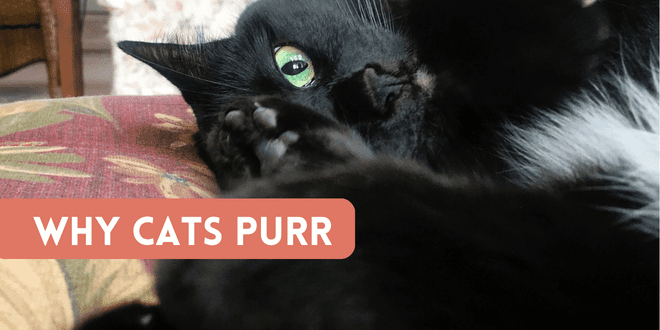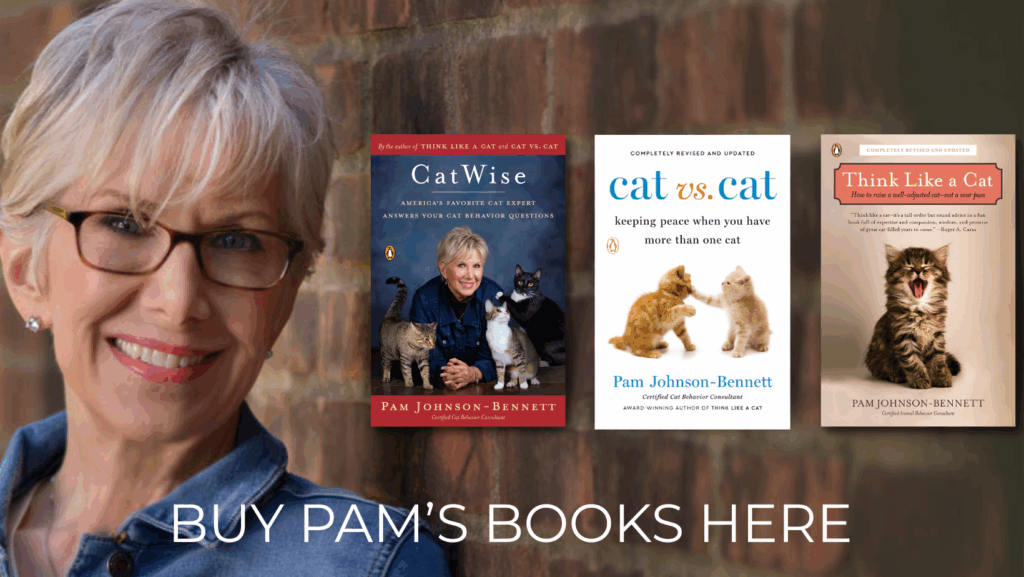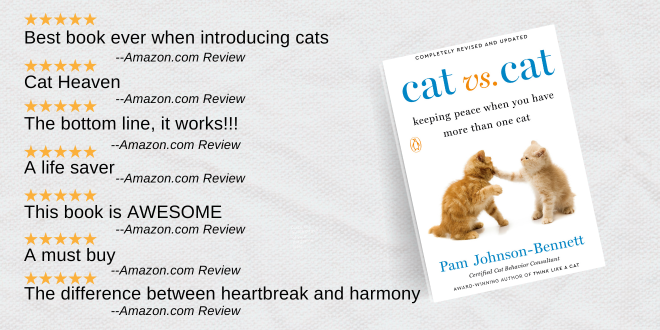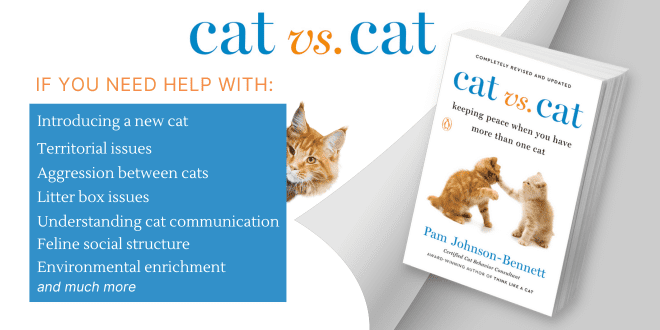
The purr of a cat. It’s the most mesmerizing sound. It’s the sound that makes you smile and think all is right in their world. That gentle sound relaxes and even mystifies you, but just how much do you really know about why and how your cat purrs? Some facts may surprise you. The purr serves more than one purpose so if you were under the impression, as so many people are, that cats only purr when happy or content, you’re missing out on how multifaceted a purr truly is.
In the Beginning for Kittens
The mother cat purrs during labor which may be to self-soothe and also for pain control. Endorphins are released when cats purr which can help in pain management.
Once kittens are born, the mother’s purr is crucial to their survival. Kittens are born blind and deaf but they do feel vibrations. It’s the mother’s vibrating purr that leads them to her body for nursing and critical warmth since they’re unable to regulate their own body temperature yet.
Kittens can purr when they’re just two days old and that starts the communication between littermates and their mom.
When kittens reach the teats they begin what is known as the milk tread. They press and flex their paws to stimulate milk flow. They also typically purr while kneading. This combination behavior of purring and kneading is often carried over into adult life. You’re probably very familiar with hearing or feeling your adult cat purr when kneading on soft objects.
This warm and wonderful feeling of being snuggled close to mom, being safe and receiving meals on-demand, certainly explains the contentment aspect of the purr.
A Cat’s Purr Serves a Variety of Functions
The purr communicates several different emotional states. The one humans are most familiar with is that a purring cat is content and happy but in reality, cats purr for a variety of reasons and not all of them mean contentment.
The cat’s purr has been compared to the human smile. People smile for a variety of reasons. People smile when happy, nervous, unsure, or when trying to make someone else feel comfortable. It’s that way with the purr as well. Cats may purr when happy but also they use it for self-soothing. Cats may purr in an attempt to soothe a potential opponent when they know there’s no means of escape. They may purr when nervous, sick, in pain or even when close to death. This makes sense because of the endorphin release.
Many cats really know how to maximize the purr to their advantage. A study at the University of Sussex in the UK identified that cats have developed a specialized purr referred to as a “soliciting purr.” The specialized purr includes cries at similar frequencies to a human baby cry. Cats seem to be able to ramp up the high frequency in order to get their human family members to feed them. Pretty smart, wouldn’t you agree?
Purring is also believed to be used by cats for healing. Purrs vibrate at 25-150HZ which is also the frequency that assists in physical healing and bone mending. It may also be that purring during resting is a form of physical therapy to keep the cat’s bones strong since the frequency range of 25-150HZ increases bone density. So even as cats are napping or resting, they might be keeping their bones strong and healthy and ready for the next opportunity to pounce on prey.
How Purring Helps Humans
We benefit as well when our cats purr. Just stroking a cat has been shown to lower blood pressure and stress. The sound of the cat’s purr near us usually makes us feel more relaxed since we associate purring with contentment. We begin stroking the purring cat and that exchange is very comforting.
What About Big Cats?
Large cats that roar, such as lions, don’t purr but cats who don’t roar can purr, such as cheetahs and bobcats. Cats that purr have a hard hyoid bone located in the throat. Cats that don’t purr have a more elastic hyoid bone. That flexibility of the bone enables roaring but not purring.
Cats don’t have a monopoly on purring though. Some other animals can purr as well, such as raccoons. Have you ever been close enough to hear the purring of a raccoon? Probably not. As for me, I think I’ll stick with the cat’s purr.
Want More Information?
For more specific information on cat behavior, refer to any of the best-selling books by Pam Johnson-Bennett. Pam’s books are available at bookstores and online. We’ve included links to Amazon on our website.
https://catbehaviorassociates.com/buy-pams-books/
If you have a question regarding your cat’s health, please contact your veterinarian. This article is not intended as a replacement for your cat’s veterinary care.




